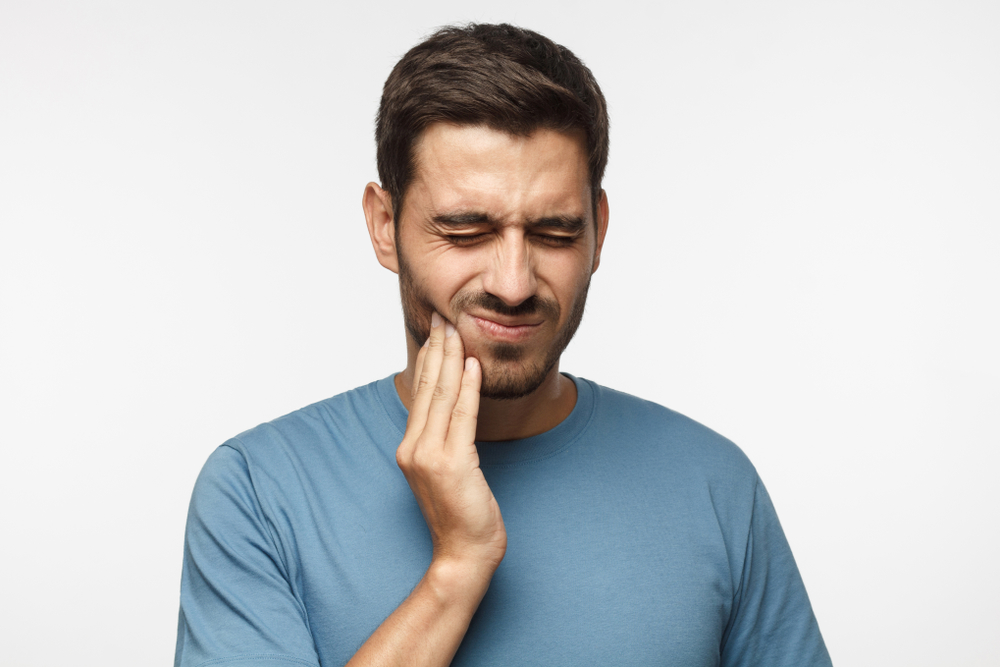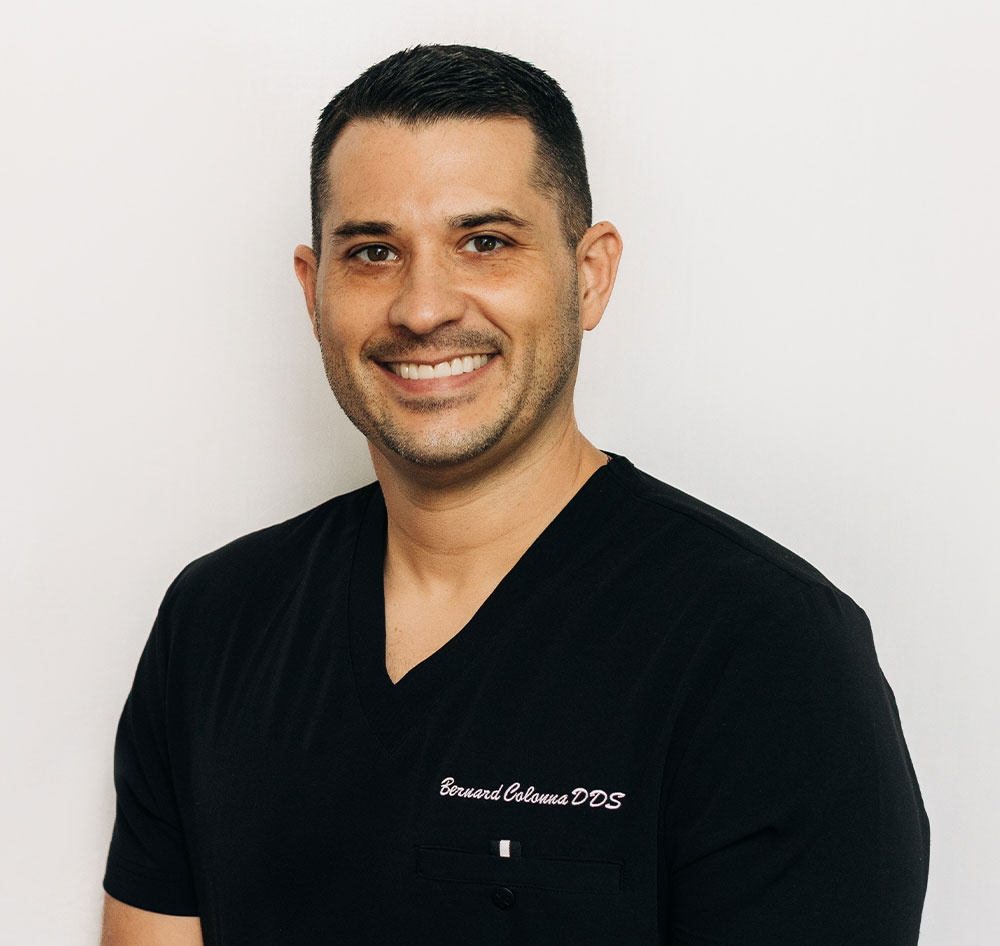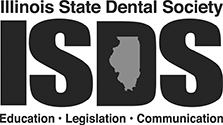Dental Injuries
Dental Injuries: Causes & Treatment Options

Dental injuries can happen to anyone, often when we least expect it. Count on Amedeo and Colonna, LTD in Park Ridge for all your emergency dental needs.
Understanding Dental Injuries
Dental injuries can manifest in different ways, affecting various parts of the oral cavity. When we think of dental injuries, we often picture injuries to the teeth themselves, such as fractures, displacements, and avulsions.
However, dental injuries can also involve trauma to the soft tissue, including the gums, tongue, and cheeks, and also impact the alveolar bone, which supports the teeth.
It’s important to recognize that dental injuries can encompass a broad range of conditions, each requiring specific treatment approaches.
- Dental injuries to the teeth can happen due to direct trauma, like falls, sports injuries, or accidents. They can cause fractures, dislocations, or complete avulsion of the tooth. Fractures can range from minor enamel fractures to more severe fractures involving dentin and pulp. Dislocation occurs when teeth are pushed out of their normal position, while avulsion refers to complete displacement from the socket. These injuries vary in severity and require prompt dental intervention to preserve tooth function and aesthetics.
- Dental injuries can involve soft tissue, such as the gums, tongue, and cheeks. These injuries may include lacerations, abrasions, and bruising. Alveolar bone injuries can also occur, affecting the structural support of the teeth. Proper diagnosis and treatment are crucial for managing these injuries and preserving dental health. The professionals at Amedeo and Colonna, LTD in Park Ridge are trained to assess and treat all aspects of dental trauma for the best outcomes.
Types of Dental Injuries
Dental injuries can vary in type and severity depending on the traumatic event and the affected structures. Here are some common types of dental injuries:
- Enamel Fractures: These injuries involve damage to the outer protective layer of the tooth, the enamel. Enamel fractures can range from minor chips and cracks to more extensive fractures.
- Crown Fractures: Crown fractures refer to injuries that involve both the enamel and dentin layers of the tooth. Depending on the severity, crown fractures can be classified as enamel-dentinal fractures or complicated crown fractures, which may expose the pulp of the tooth.
- Root Fractures: Root fractures occur in the roots of teeth and can be classified as horizontal, vertical, or oblique fractures. Treatment options for root fractures depend on the location and severity of the fracture.
- Luxation Injuries: Luxation injuries involve teeth that have been displaced from their normal position due to trauma. These injuries include subluxation, lateral luxation, intrusion, and extrusion of teeth.
- Avulsion: Avulsion occurs when a tooth is completely knocked out of its socket. Immediate action and proper storage of the avulsed tooth are crucial to increase the chances of successful replantation.
- Dental injuries, especially those that involve the pulp of the tooth, may require root canal treatment. Root canal therapy involves removing the infected or damaged pulp, cleaning and shaping the root canal, and sealing it to prevent further infection. This treatment option aims to preserve the tooth and its function.
- Injuries to the alveolar bone, which supports the teeth, can also occur as a result of trauma. Alveolar bone injuries are evaluated and managed by dental professionals, who may employ various treatment approaches, including splinting and bone grafting, to stabilize and restore the bone structure.
- Understanding the different types of dental injuries is essential for appropriate treatment. If you experience a dental injury, it’s important to seek prompt professional dental care at Amedeo and Colonna in Park Ridge to minimize complications and preserve the health of your teeth and oral structures.
Common Risk Factors
Several risk factors contribute to the prevalence of dental injuries, particularly among children, adolescents, and athletes of all ages. Identifying these risk factors can help individuals and the professionals at Amedeo and Colonna, LTD develop strategies to minimize the risk of dental injuries. Here are some common risk factors associated with dental injuries:
- Contact sports: Engaging in contact sports, such as football, rugby, martial arts, or hockey, increases the risk of dental injuries due to the potential for collisions, falls, and direct blows to the mouth. In contact sports, athletes are more susceptible to dental injury compared to non-contact sports.
- High school athletes: Adolescents participating in high school sports, where contact and physicality are common, may be at a higher risk of dental injuries. The physical nature of high school sports, combined with the fast-paced and competitive environment, can increase the likelihood of accidents and trauma to the oral cavity.
- Football players: Football players, in particular, are prone to dental injuries due to the nature of the sport. The risk of dental injuries is heightened by the physicality of the game, including tackles, collisions, and contact with equipment, such as helmets and mouthguards.
- To mitigate these risk factors, athletes of all ages should utilize appropriate protective measures, such as wearing mouthguards and other sports-related equipment, to minimize the risk of dental injuries. Additionally, educating athletes, coaches, and parents about oral safety and injury prevention can further reduce the occurrence of dental injuries in sports settings. The professionals at Amedeo and Colonna, LTD, along with sports health professionals, play a crucial role in raising awareness, implementing safety protocols, and providing guidance on preventive measures to protect athletes’ oral health.
Recognizing Dental Injuries
Promptly seeking professional help at Amedeo and Colonna, LTD is crucial for effective treatment and a positive prognosis in dental injuries. Common signs and symptoms that may indicate dental trauma should not be ignored. Immediate evaluation at Amedeo and Colonna, LTD is necessary, particularly in emergencies. Here are some common indicators of dental injuries:
- Swelling: Swelling around the mouth, gums, or face can indicate trauma to the teeth or oral structures. Swelling may result from soft tissue injury, alveolar bone damage, or infection following dental trauma.
- Lacerations and bleeding: Cuts, lacerations, or profuse bleeding in and around the mouth are common signs of dental injuries. Trauma to the oral tissues can cause lacerations, and bleeding may occur as a result.
- Sensitive teeth: Tooth sensitivity or heightened sensitivity to hot, cold, or sweet stimuli can be an indicator of dental injuries, such as enamel fractures or dentin exposure.
- Displaced teeth: Teeth that appear out of their normal alignment, pushed inward, or completely knocked out of their socket require immediate attention. Displaced teeth can indicate traumatic dental injuries and may require prompt dental intervention for repositioning and stabilization.
- Oral discomfort: Persistent oral pain, discomfort, or difficulty chewing can be indications of dental injuries. Any unexplained oral discomfort should be evaluated by the dental professionals at Amedeo and Colonna, LTD to determine the underlying cause.
- It is essential to note that dental emergencies, such as severe tooth avulsions, significant tooth fractures, or severe oral bleeding, require immediate professional attention. Delaying treatment in dental emergencies can significantly impact the prognosis and long-term outcomes. If you experience any of these signs and symptoms, it is best to seek professional dental care from Amedeo and Colonna, LTD in Park Ridge for a comprehensive evaluation and appropriate treatment.
When to Seek Professional Help
When it comes to dental injuries, knowing when to seek professional help is crucial for timely and effective treatment. Prompt intervention can make a significant difference in the prognosis and long-term outcomes of dental injuries. Here are some situations in which you should consult the professionals at Amedeo and Colonna, LTD:
- Dental emergencies: Dental emergencies, such as severe tooth avulsions, significant tooth fractures, or severe oral bleeding, require immediate professional attention. Delaying treatment in dental emergencies can significantly impact the prognosis and long-term outcomes. If you experience a dental emergency, contact Amedeo and Colonna, LTD as soon as possible.
- Facial trauma or severe injuries: If you have experienced facial trauma, such as a hard blow to the mouth or significant facial injuries, it is essential to seek medical and dental attention. In such cases, Amedeo and Colonna, LTD may work in collaboration with medical professionals to ensure comprehensive and appropriate care.
- Dental pain or discomfort: Persistent dental pain, oral discomfort, or difficulty chewing can indicate dental injuries. If you experience unexplained oral pain, it is best to consult Amedeo and Colonna, LTD for a comprehensive evaluation and diagnosis. We can determine the underlying cause of the pain and provide appropriate treatment.
- Advice of Amedeo and Colonna, LTD: If you are unsure whether your dental injury requires professional attention, it is always advisable to consult the professionals at Amedeo and Colonna, LTD for guidance and to assess your specific situation. Our professionals will provide advice and recommend the best course of action based on their expertise and knowledge of your oral health history.
Taking action and seeking professional dental help when needed is vital for preserving your oral health and preventing further complications. By addressing dental injuries promptly, you increase the chances of successful treatment and better long-term outcomes.
The Diagnosis Process
The diagnosis of dental injuries at Amedeo and Colonna, LTD in Park Ridge involves a systematic process conducted by utilizing various clinical and radiographic assessments to accurately identify the type and severity of dental trauma. The diagnosis process for dental injuries typically includes the following steps:
- Patient history: Amedeo and Colonna, LTD begin by gathering information about the patient’s medical and dental history, as well as details about the traumatic event. This helps in understanding the context, onset, and impact of the dental trauma.
- Clinical examination: A thorough clinical examination of the oral cavity and surrounding structures is conducted, including soft tissue, teeth, alveolar bone, and adjacent teeth. Amedeo and Colonna, LTD observe and document any noticeable abnormalities or injuries, such as enamel or crown fractures, displacement of teeth, or soft tissue lacerations.
- Radiographic evaluation: To further assess the extent of dental injuries, radiographs may be taken, such as dental X-rays, to visualize and evaluate the internal structures, including tooth roots, bone, and pulp chambers. Radiographs play a crucial role in identifying hidden or undetectable injuries and guiding treatment decisions.
- Diagnostic classification: Amedeo and Colonna, LTD utilize internationally recognized diagnostic systems, such as the Andreasen Classification, to classify and categorize dental injuries accurately. The Andreasen Classification consists of various sub-categories that provide detailed and standardized guidelines for diagnosing and treating different types of dental trauma, including crown and root fractures, root resorption, and avulsion injuries.
By following a systematic diagnosis process, Amedeo and Colonna, LTD can accurately diagnose dental injuries and determine the appropriate treatment approaches. This ensures that patients receive timely and targeted care, leading to improved prognosis and long-term oral health outcomes.
Treating Dental Injuries
Prompt and appropriate treatment is crucial in managing dental injuries and preventing complications. The specific treatment approach depends on the type and severity of the injury. Here are common treatment options for dental injuries:
- Treatment for Displaced Teeth: Displaced teeth require immediate dental intervention to reposition and stabilize them. Splinting techniques, which involve bonding the injured tooth to adjacent teeth, may be used to secure the tooth in its proper position. Regular monitoring and follow-up visits to Amedeo and Colonna, LTD are essential during the treatment process to ensure the tooth’s stability and healing.
- Treatment for Chipped or Fractured Teeth: If a tooth is chipped or fractured, treatment options may include dental bonding, dental veneers, or dental crowns, depending on the severity and location of the fracture. Amedeo and Colonna, LTD prioritize restoring the tooth’s structure and function while preserving its aesthetics.
The choice of treatment for dental injuries varies based on several factors, including the type and extent of the injury, the age of the patient, and the patient’s oral health. Amedeo and Colonna, LTD work closely with patients to develop individualized treatment plans that address their unique needs and provide the best possible outcomes.
Schedule a consultation today
Dental injuries can vary in severity and require prompt attention from the professionals at Amedeo and Colonna, LTD in Park Ridge. It’s crucial to recognize the signs and symptoms of dental injuries and seek our professional help when needed. Prompt diagnosis and treatment are essential to prevent complications such as pulpal necrosis and root resorption.
Prevention is always better than cure, so taking preventive measures like using mouth guards during sports activities and maintaining good dental hygiene practices can help reduce the risk of dental injuries. Remember, the prognosis for dental injuries depends on various factors, and it’s important to follow the recommended treatment plan for the best possible outcome.
If you have experienced a dental injury or want to learn more about prevention strategies, don’t hesitate to make an appointment with the professionals at Amedeo and Colonna, LTD in Park Ridge.

 Dr. Colonna
Dr. Colonna Dr. Maloney
Dr. Maloney Meet the Team
Meet the Team



